ANNALS OF THE KINGS OF ASSYRIA
During early discoveries and excavations, the civilizations of Mesopotamia excited as much interest as that of ancient Egypt particularly Assyria, the empire that once dominated Western Asia and whose heartland was located in present-day Iraq. The renown of its cities, notably Ninevah and Khorsabad, and of rulers such as Shalmaneser and Tiglath Pileser, have come down through history, and have been substantiated by excavations during the nineteenth century by Austen Henry Layard and others. More recently, political conditions have prevented further extensive excavations, and Assyrian culture and early history are consequently less well known than they should be, a lacuna that this book helps to address.
Collected together and published in chronological order for the first time by the noted scholar E. A. Wallis Budge in 1902, this work contains all the Assyrian texts covering a period of eleven hundred and fifty years, from the reign of Irishum, about 2000 BC, to that of Ashur-nasir-pal, who died in 860 BC, taken from bricks, memorial tablets, stelae, votive slabs, obelisks and reliefs that were then in the collections of the British Museum. The texts, which record the history, conquests, achievements and devotions of the early rulers of Assyria, are presented in Assyrian characters or cuneiform, with complete English renderings and a series of transliterations and photographic reproductions of the texts. This classic work gives a useful entre to an important civilization of antiquity, located in a part of the world that is the focus of international attention.
E. A. Wallis Budge was Keeper of Egyptian and Assyrian Antiquities at the British Museum from 1894 to 1924.
Other titles by E. A. Wallis Budge published by Kegan Paul are Ethiopian Book of the Dead; The Queen of Sheba and Her Only Son Menyelek; Egyptian Music; The Mummy; Osiris; Alexander the Great; The Book of Governors; From Fetish to God in Ancient Egypt; Notes for Travellers in Egypt; First Steps in Egyptian; The Literature of the Egyptians; Baralam and Yewasef; Tutankhamen: Amenism, Atenism and Egyptian Monotheism; The Gods of the Egyptians (2 vols.); and The Book of the Kings of Egypt.
THE KEGAN PAUL LIBRARY
OF ARCHAEOLOGY AND HISTORY
Jerusalem in History
K. J. Asali
Ancient Civilizations and Ruins of Turkey
Ekrem Akurgal
A Short History of the Saracens
Ameer Ali
Alexander the Great
E. A. Wallis Budge
The Technical Arts and Sciences of the Ancients
Albert Neuburger
The Kingdom of Georgia
Sir Oliver Wardrop
Annals of the Kings of Assyria
E. A. Wallis Budge
ANNALS OF THE KINGS OF ASSYRIA
The Cuneiform Texts with Translations and Transliterations
from the Original Documents
E. A. WALLIS BUDGE
KEOAN PAUL
London New York Bahrain
First published in 2005 by
Kegan Paul Limited
UK: P.O. Box 256, London WC1B 3SW, England
Tel: 020 7580 5511 Fax: 020 7436 0899
E-Mail:
Internet: http://www.keganpaul.com
USA: 61 West 62nd Street, New York, NY 10023
Tel: (212) 459 0600 Fax: (212) 459 3678
Internet: http://www.columbia.edu/cu/cup
BAHRAIN:
Distributed by:
Marston Book Services Ltd
160 Milton Park
Abingdon
Oxfordshire OX14 4SD
United Kingdom
Tel: (01235) 465500 Fax: (01235) 465555
Email:
Columbia University Press
61 West 62nd Street, New York, NY 10023
Tel: (212) 459 0600 Fax: (212) 459 3678
Internet: http://www.columbia.edu/cu/cup
Kegan Paul, 2005
Printed in Great Britain
All rights reserved. No part of this book may be reprinted or
reproduced or utilised in any form or by any electric, mechanical
or other means, now known or hereafter invented, including
photocopying or recording, or in any information storage or retrieval
system, without permission in writing from the publishers.
ISBN: 0-7103-1033-1
British Library Cataloguing in Publication Data
Annals of the kings of Assyria : the cuneiform texts with
translations, transliterations, etc. from the original
documents in the British Museum
Vol. 1. (Ancient Egypt)
1.Cuneiform inscriptions, Akkadian 2.Akkadian language
Texts 3.Assyria History Sources
I.Budge, Sir E. A. Wallis (Ernest Alfred Wallis) II.King L.W.
935.02
ISBN 0710310331
THE present Volume contains the long and important series of Assyrian texts inscribed upon the bricks, memorial tablets, stel, votive slabs, obelisks, and reliefs, etc., which are preserved in the British Museum and record the history of the early rulers and kings of Assyria from the reign of Irishum, about B.C. 2000, to that of Ashur-na

ir-pal, who died in B.C. 860. It may be noted that the documents here published represent all the contemporaneous native authorities now extant for the history of Assyria during this period of about eleven hundred and fifty years, and that the original texts are here collected and published in chronological order for the first time.
Complete English renderings of the inscriptions have been added, and, with the view of making the work as useful as possible to the large and increasing body of students of the Assyrian language and history, a series of transliterations of the texts has been provided. All the variant readings obtained from an examination of the various duplicate copies of the texts are printed in the form of footnotes.
The series of photographic reproductions included in the Introduction will enable the student to compare the forms of the Assyrian characters in the inscriptions of various periods and to trace their development.
E. A. WALLIS BUDGE.
BRITISH MUSEUM,
23rd October, 1902.
CONTENTS.
_______________
THE ANNALS OF THE KINGS OF ASSYRIA:
LIST OF ILLUSTRATIONS.
_______________
INTRODUCTION
_______________
OF the circumstances under which the kingdom of Assyria came into being, nothing whatever is known with certainty, but all the evidence on the subject now available tends to prove that Assyria was colonized from Babylonia at some period anterior to B.C. 2200; and we are justified in assuming that her earliest governors and viceroys were nominees of, or at any rate tributaries to, the Babylonians. The data supplied by the cuneiform inscriptions thus support the statement made in the Book of Genesis (x., 11), to the effect that Asshur went forth from the land of Shinar and builded Nineveh, and the city Rehoboth, and Calah. The earliest mention of the actual name of the country of Assyria in the cuneiform inscriptions is found in a letter addressed by Khammurabi, king of Babylonia, to his viceroy Sin-idinnam, whom he instructs to despatch to him two hundred and forty men of a regiment called the King's Company; under the command of Nannar-iddina, who, the king goes on to say, have left the country of Ashur and the district of Shitullum.1 The position of the last named district is unknown, but, as it is mentioned in connection with Assyria, we may infer that it also lay to the north of Babylonia.
As nothing definite is known of the events which resulted in the rise of the Assyrian kingdom as an independent power, so we possess no exact knowledge of early Assyrian chronology, and it is only by piecing together the genealogies of kings, and miscellaneous statements found in the historical inscriptions of Assyrian kings, and the synchronisms with Babylonian history, that any tolerably consecutive system of chronology for the earlier Assyrian period,

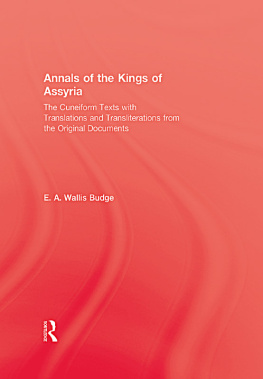
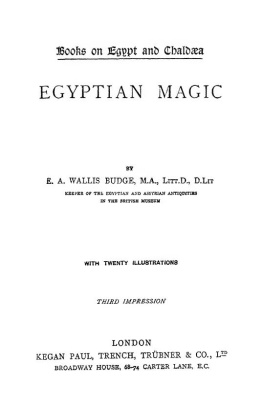
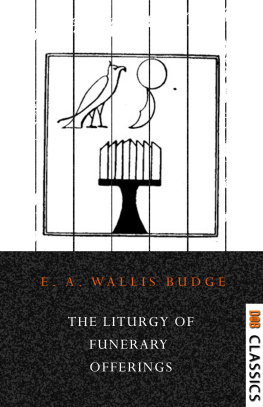

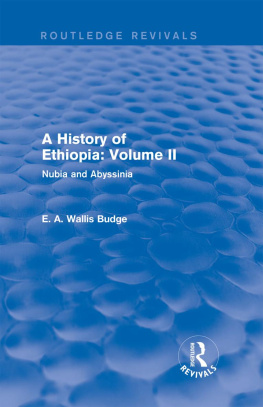
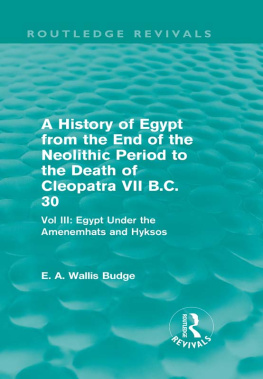
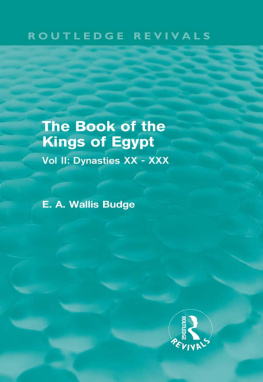
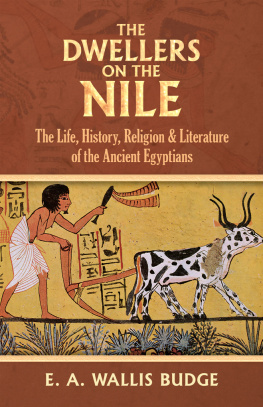

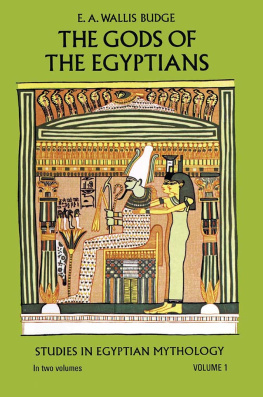
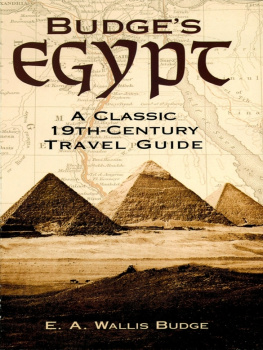

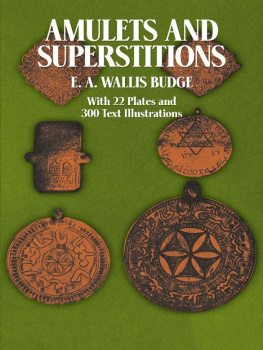

 ir-pal, who died in B.C. 860. It may be noted that the documents here published represent all the contemporaneous native authorities now extant for the history of Assyria during this period of about eleven hundred and fifty years, and that the original texts are here collected and published in chronological order for the first time.
ir-pal, who died in B.C. 860. It may be noted that the documents here published represent all the contemporaneous native authorities now extant for the history of Assyria during this period of about eleven hundred and fifty years, and that the original texts are here collected and published in chronological order for the first time.